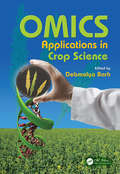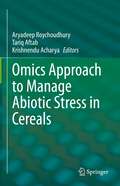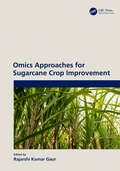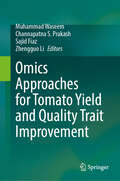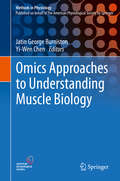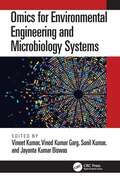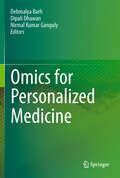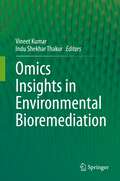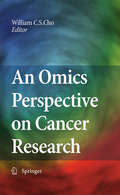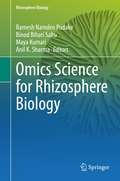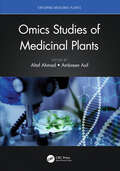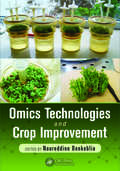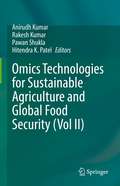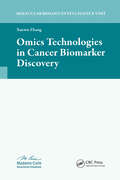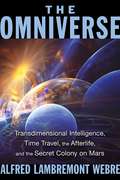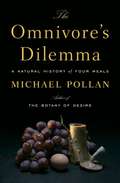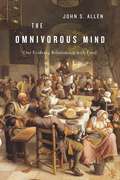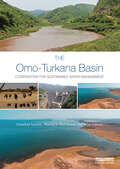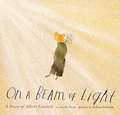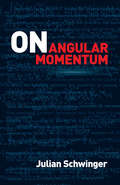- Table View
- List View
OMICS Applications in Crop Science
by Debmalya BarhMerging topical data from recently published review and research articles, as well as the knowledge and insight of industry experts, Omics Applications in Crop Science delves into plant science, and various technologies that use omics in agriculture. This book concentrates on crop breeding and environmental applications, and examines the applicatio
Omics Approach to Manage Abiotic Stress in Cereals
by Aryadeep Roychoudhury Tariq Aftab Krishnendu AcharyaThe edited book highlights various emerging Omics tools and techniques that are currently being used in the analysis of responses to different abiotic stress in agronomically important cereals and their applications in enhancing tolerance mechanism. Plants are severely challenged by diverse abiotic stress factors such as low water availability (drought), excess water (flooding/ waterlogging), extremes of temperatures (cold, chilling, frost, and heat), salinity, mineral deficiency, and heavy metal toxicity. Agronomically important cereal crops like Rice, Wheat, Maize, Sorghum, Pearl Millet, Barley, Oats, Rye, Foxtail Millets etc. that are the major sources of food material and nutritional components for human health are mostly exposed to abiotic stresses during the critical phases of flowering and grain yield. Different Omics platforms like genomics, transcriptomics proteomics, metabolomics and phenomics, in conjunction with breeding and transgenic technology, and high throughput technologies like next generation sequencing, epigenomics, genome editing and CRISPR-Cas technology have emerged altogether in understanding abiotic stress response and strengthening defense and tolerance mechanism of different cereals. This book is beneficial to different universities and research institutes working with different cereal crops in the areas of stress physiology, stress-associated genes and proteins, genomics, proteomics, genetic engineering, and other fields of molecular plant physiology. The book can also be used as advanced textbook for the course work of research and master’s level students. It will be of use to people involved in ecological studies and sustainable agriculture. The proposed book bring together the global leaders working on environmental stress in different cereal crops and motivate scientists to explore new horizons in the relevant areas of research.
Omics Approaches for Sugarcane Crop Improvement
by Rajarshi Kumar GaurIn this book, the information encompasses various researchable biotechnology aspects of sugarcane, its genomic structure, diversity, comparative and structural genomics, data mining, etc. This book explores both the theoretical and practical aspects of sugarcane crops, focusing on innovative processes. This book argues in favor of developing an integrated research and development system to strengthen the research and development capabilities of all the areas of sugarcane. Further, it covers the recent trends of sugarcane biotechnology, especially in the next-generation sequencing (NGS) era. This book will be very useful for professors and scientists who are working in the area of sugarcane crops by using molecular biology and bioinformatics. It is also useful for students to use as a reference for their classes or thesis projects. Key features: • Discusses an integral part of molecular biology and pivotal tools for molecular breeding; enables breeders to design cost-effective and efficient breeding strategies for sugarcane • Discusses the harnessing genomics technologies for genetic engineering and pathogen characterization and diagnosis of sugarcane • Provides new examples and problems, added where needed • Provides insight from contributors drawn from around the globe
Omics Approaches for Tomato Yield and Quality Trait Improvement
by Muhammad Waseem Sajid Fiaz Channapatna S. Prakash Zhengguo LiThis volume explores the latest advancements and innovative techniques in the field of tomato breeding. The book delves into the cutting-edge research trends and methodologies aimed at enhancing tomato yield and improving its quality traits. It highlights the growing importance of molecular breeding approaches in addressing the challenges faced by the tomato industry. Tomatoes are one of the most widely consumed vegetables globally, and enhancing their yield and quality is of paramount importance for sustainable agriculture. Researchers and breeders are increasingly utilizing advanced molecular tools and techniques to dissect the genetic architecture underlying important traits in tomatoes. This book covers the integration of genomics, transcriptomics, proteomics, and metabolomics, enabling a holistic understanding of the molecular mechanisms governing tomato yield and quality. It explores how these omics-based approaches contribute to the identification of key genes and pathways associated with traits such as yield, flavor, color, texture, nutritional content, and disease resistance. It emphasizes the utilization of molecular markers and marker-assisted selection (MAS) in tomato breeding programs and explores how the identification and deployment of markers linked to desirable traits facilitate the selection of superior genotypes, accelerating the breeding process and improving efficiency. It explores the application of techniques such as CRISPR-Cas9, TALENs, and zinc finger nucleases for precise modification of target genes, leading to enhanced yield, improved quality, and resistance to biotic and abiotic stresses. The book highlights the potential of these molecular tools in creating novel tomato varieties with traits that meet the demands of consumers, markets, and sustainable agriculture. It showcases successful case studies, multidisciplinary collaborations, and global initiatives that contribute to advancing the field and overcoming challenges. This book serves as a valuable resource for researchers, breeders, and students interested in understanding and implementing molecular breeding strategies for enhancing tomato yield and improving its quality traits.
Omics Approaches to Understanding Muscle Biology (Methods in Physiology)
by Jatin George Burniston Yi-Wen ChenThis book is a collection of principles and current practices in omics research, applied to skeletal muscle physiology and disorders. The various sections are categorized according to the level of biological organization, namely, genomics (DNA), transcriptomics (RNA), proteomics (protein), and metabolomics (metabolite). With skeletal muscle as the unifying theme, and featuring contributions from leading experts in this traditional field of research, it highlights the importance of skeletal muscle tissue in human development, health and successful ageing. It also discusses other fascinating topics like developmental biology, muscular dystrophies, exercise, insulin resistance and atrophy due to disuse, ageing or other muscle diseases, conveying the vast opportunities for generating new hypotheses as well as testing existing hypotheses by combining high-throughput techniques with proper experiment designs, bioinformatics and statistical analyses. Presenting the latest research techniques, this book is a valuable resource for the physiology community, particularly researchers and grad students who want to explore the new opportunities for omics technologies in basic physiology research.
Omics for Environmental Engineering and Microbiology Systems
by Vineet KumarBioremediation using microbes is a sustainable technology for biodegradation of target compounds, and an omics approach gives more clarity on these microbial communities. This book provides insights into the complex behavior of microbial communities and identifies enzymes/metabolites and their degradation pathways. It describes the application of microbes and their derivatives for the bioremediation of potentially toxic and novel compounds. It highlights the existing technologies along with industrial practices and real-life case studies. Features: Includes recent research and development in the areas of omics and microbial bioremediation. Covers the broad environmental pollution control approaches such as metagenomics, metabolomics, fluxomics, bioremediation, and biodegradation of industrial wastes. Reviews metagenomics and waste management, and recycling for environmental cleanup. Describes the metagenomic methodologies and best practices, from sample collection to data analysis for taxonomies. Explores various microbial degradation pathways and detoxification mechanisms for organic and inorganic contaminants of wastewater with their gene expression. This book is aimed at graduate students and researchers in environmental engineering, soil remediation, hazardous waste management, environmental modeling, and wastewater treatment.
Omics for Personalized Medicine
by Debmalya Barh Dipali Dhawan Nirmal Kumar Ganguly"Omics for Personalized Medicine" will give to its prospective readers the insight of both the current developments and the future potential of personalized medicine. The book brings into light how the pharmacogenomics and omics technologies are bringing a revolution in transforming the medicine and the health care sector for the better. Students of biomedical research and medicine along with medical professionals will benefit tremendously from the book by gaining from the diverse fields of knowledge of new age personalized medicine presented in the highly detailed chapters of the book. The book chapters are divided into two sections for convenient reading with the first section covering the general aspects of pharmaocogenomic technology that includes latest research and development in omics technologies. The first section also highlights the role of omics in modern clinical trials and even discusses the ethical consideration in pharmocogenomics. The second section is focusing on the development of personalized medicine in several areas of human health. The topics covered range from metabolic and neurological disorders to non-communicable as well as infectious diseases, and even explores the role of pharmacogenomics in cell therapy and transplantation technology. Thirty-four chapters of the book cover several aspects of pharmacogenomics and personalized medicine and have taken into consideration the varied interest of the readers from different fields of biomedical research and medicine. Advent of pharmacogenomics is the future of modern medicine, which has resulted from culmination of decades of research and now is showing the way forward. The book is an honest endeavour of researchers from all over the world to disseminate the latest knowledge and knowhow in personalized medicine to the community health researchers in particular and the educated public in general.
Omics in Plant Breeding
by Roberto Fritsche-Neto Aluízio BorémComputational and high-throughput methods, such as genomics, proteomics, and transcriptomics, known collectively as "-omics," have been used to study plant biology for well over a decade now. As these technologies mature, plant and crop scientists have started using these methods to improve crop varieties. Omics in Plant Breeding provides a timely introduction to key omicsbased methods and their application in plant breeding.Omics in Plant Breeding is a practical and accessible overview of specific omics-based methods ranging from metabolomics to phenomics. Covering a single methodology within each chapter, this book provides thorough coverage that ensures a strong understanding of each methodology both in its application to, and improvement of, plant breeding.Accessible to advanced students, researchers, and professionals, Omics in Plant Breeding willbe an essential entry point into this innovative and exciting field.* A valuable overview of high-throughput, genomics-based technologies and their applications to plant breeding* Each chapter explores a single methodology, allowing for detailed and thorough coverage* Coverage ranges from well-established methodologies, such as genomics and proteomics, to emerging technologies, including phenomics and physionomicsAluízio Borém is a Professor of Plant Breeding at the University of Viçosa in Brazil.Roberto Fritsche-Neto is a Professor of Genetics and Plant Breeding at the University of São Paulo in Brazil.
Omics Insights in Environmental Bioremediation
by Vineet Kumar Indu Shekhar ThakurEnvironmental pollution emanating from rapid industrialization, population growth, and urbanization has been considered a major problem in recent years that affects biodiversity, ecosystems, and human health by contaminating soil and water. This book brings out a comprehensive collection of information on valuable insights into different cutting-edge omics technologies, such as metagenomics, metatranscriptomics, metaproteomics, and metabolomics, along with advanced next-generation sequencing technologies as well as bioinformatic tools, which led to a better understanding of microbial communities and their adaptability to a wide range of contaminants and underlying their mechanisms in bioremediation and biodegradation of environmental pollutants. In addition, this edited volume provides critical insight into of potent microbial communities endowed with unique functional attributes through their unique metabolism catalyzed by ‘signature’ enzymes and degradation pathways. Step-by-step descriptions are provided of various microbial metabolic pathways of degradation and biotransformation of environmental contaminants by numerous illustrations which make the information easier to understand for the readers. Each chapter is devoted to selected examples of microbial bioremediation supported by tables, and an extensive list of references for readers interested in learning further details about the subject matter. This book is of interest to teachers, researchers to professionals, policymakers, stockholders, practitioners, environmental engineers, soil scientists, and policymakers. In addition, the book serves as additional comprehensive material for undergraduate, graduate, and doctoral students who require a working knowledge and knowhow of ‘Omics’ involved in and required for environmental remediation of legacy and emerging contaminants, will also find this to be a useful read.
Omics of Climate Resilient Small Millets
by Ramesh Namdeo Pudake Amolkumar U. Solanke Amitha Mithra Sevanthi P. RajendrakumarThis edited book covers all aspects of omics approaches used for the varietal improvement of millets in changing climatic conditions. Millets are the collection of small-grained cereal grasses, that are grown for human carbohydrate needs. They are among the oldest crops, mainly divided into two groups – Major and small millets based on seed size. Small millets are earlier considered orphan crops, but recently due to their nutritional values, they are getting importance in cultivation. This book explores the genomics, transcriptomics, proteomics, metabolomics, bioinformatics, and other omics tools that are being widely used to get a clear understanding of mechanistic approaches taken by plant genes to tolerate stress. Various reports are published based on field breeding on these crops, and recently the genome of some of the small millets is released, and many omics studies are published related to its application in varietal improvements. This book reviewed all those recent studies and is of interest to research students, plant breeding scientists, teachers that are working in agriculture and plant biotech universities. Along with this, the book serves as reference material for undergraduate and graduate students of agriculture, and biotechnology. National and international agricultural scientists, policymakers will also find this to be a useful read.
An Omics Perspective on Cancer Research
by William C.S. ChoOmics is an emerging and exciting area in the field of science and medicine. Numerous promising developments have been elucidated using omics (including genomics, transcriptomics, epigenomics, proteomics, metabolomics, interactomics, cytomics and bioinformatics) in cancer research. The development of high-throughput technologies that permit the solution of deciphering cancer from higher dimensionality will provide a knowledge base which changes the face of cancer understanding and therapeutics. This is the first book to provide such a comprehensive coverage of a rapidly evolving area written by leading experts in the field of omics. It complies and details cutting-edge cancer research that covers the broad advances in the field and its application from cancer-associated gene discovery to drug target validation. It also highlights the potential of using integration approach for cancer research. This unique and timely book provides a thorough overview of developing omics, which will appeal to anyone involved in cancer research. It will be a useful reference book for graduate students of different subjects (medicine, biology, engineering, etc) and senior scientists interested in the fascinating area of advanced technologies in cancer research. Readership: This is a precious book for all types of readers - cancer researchers, oncologists, pathologists, biologists, clinical chemists, pharmacologists, pharmaceutical specialists, biostatisticians, and bioinformaticists who want to expand their knowledge in cancer research.
Omics Science for Rhizosphere Biology (Rhizosphere Biology)
by Ramesh Namdeo Pudake Binod Bihari Sahu Maya Kumari Anil K. SharmaThis book presents a timely review of the latest advances in rhizosphere biology, which have been facilitated by the application of omics tools. It includes chapters on the use of various omics tools in rhizosphere biology, focusing on understanding plant and soil microbe interactions. The role of proteomics and metagenomics in research on symbiotic association is also discussed in detail. The book also includes chapters on the use of omics tools for the isolation of functional biomolecules from rhizospheric microorganisms. The book’s respective sections describe and provide detailed information on important omics tools, such as genomics, transcriptomics, proteomics, metabolomics and meta-epigenomics. In turn, the book promotes and describes the combined use of plant biology, microbial ecology, and soil sciences to design new research strategies and innovative methods in soil biology. Lastly, it highlights the considerable potential of the rhizosphere in terms of crop productivity, bioremediation, ecological engineering, plant nutrition and health, as well as plant adaptation to stress conditions.This book offers both a practical guide and reference source for all scientists working in soil biology, plant pathology, etc. It will also benefit students studying soil microbiology, and researchers studying rhizosphere structure.
Omics Studies of Medicinal Plants (Exploring Medicinal Plants)
by Altaf Ahmad Ambreen AsifHerbal drugs play a pivotal role in modern medicine and pharmaceutical care; however, only limited biotechnology applications have been seen in medicinal plants. Revolutions in high-throughput approaches emphasize omics approaches, such as genomics, transcriptomics, proteomics, and metabolomics. A volume in the Exploring Medicinal Plants series, this book provides a comprehensive and in-depth analysis of breakthroughs in high-throughput approaches for the research of medicinal plants. Exploring the principles and applications of omics technologies, this book is essential for those working on or are involved in the modern research of medicinal and aromatic plants. There is also a strong focus on practical implications of these technologies through exploring the safety aspects and conservation strategies of various plants. From informative discussions on the latest research to a holistic evaluation of their potential applications, this book appeals to students, researchers and professionals working with medicinal and aromatic plants, as well as healthcare professionals interested in the area.
Omics Technologies and Crop Improvement
by Noureddine BenkebliaIncreased world population, decreased water supply, and climate change all put stresses on the global food supply. An exploration of the challenges and possible solutions to improve yields of the main crops, such as cereals, roots, tubers, and grasses, Omics Technologies and Crop Improvement reviews data on food sciences and omics. The book covers
Omics Technologies for Sustainable Agriculture and Global Food Security (Vol II)
by Anirudh Kumar Rakesh Kumar Pawan Shukla Hitendra K. PatelThis edited book brings out a comprehensive collection of information on the modern omics-based research. The main focus of this book is to educate researchers about utility of omics-based technologies in rapid crop improvement. In last two decades, omics technologies have been utilized significantly in the area of plant sciences and has shown promising results. Omics technology has potential to address the challenge of food security in the near future. The comprehensive use of omics technology occurred in last two decades and helped greatly in the understanding of complex biological problems, improve crop productivity and ensure sustainable use of ecosystem services. This book is of interest to researchers and students of life sciences, biotechnology, plant biotechnology, agriculture, forestry, and environmental sciences. It is also a useful knowledge resource for national and international agricultural scientists.
Omics Technologies for Sustainable Agriculture and Global Food Security Volume 1
by Anirudh Kumar Rakesh Kumar Pawan Shukla Manish K. PandeyIncreasing world population, unpredictable climate and various kind of biotic and abiotic stresses necessitate the sustainable increase in crop production through developing improved cultivars possessing enhanced genetic resilience against all odds. An exploration of these challenges and near possible solution to improve yield is addressed in this book. It comprehensively and coherently reviews the application of various aspect of rapidly growing omics technology including genomics, proteomics, transcriptomics and metabolomics for crop development. It provides detailed examination of how omics can help crop science and introduces the benefits of using these technologies to enhance crop production, resistance and other values. It also provides platform to ponder upon the integrative approach of omics to deal with complex biological problems. The book highlights crop improvement such as yield enhancement, biotic and abiotic resistance, genetic modification, bioremediation, food security etc. It explores how the different omics technology independently and collectively would be used to improve the quantitative and qualitative traits of crop plants. The book is useful for graduate and post-graduate students of life science including researchers who are keen to know about the application of omics technologies in the different area of plant science. This book is also an asset to the modern plant breeders, and agriculture biotechnologist.
Omics Technologies in Cancer Biomarker Discovery
by Xuewu ZhangThe early detection of human cancer is still one of the great challenges in the battle against this disease. Single biomarkers are not likely to provide sufficient diagnostic power and multibiomarker assays should be developed in order to reach high diagnostic accuracy for cancer screening at the population level. Omics technologies are emerging ne
The Omniverse: Transdimensional Intelligence, Time Travel, the Afterlife, and the Secret Colony on Mars
by Alfred Lambremont WebreA tour through the new science of the Omniverse, its spiritual and physical dimensions, and its incalculable intelligent civilizations • Reveals the key travel and communication technologies of the Omniverse: time travel, teleportation, and telepathy • Unveils newly disclosed state secrets about these technologies, about the findings of the NASA Mars rover missions, and about a secret colony and life on Mars • Explains through science how souls are holographic fragments of God and how they help create planets, solar systems, galaxies, and universes in the multiverse We are all citizens of the Omniverse, the overarching matrix of energy, spirit, and intelligence that encompasses all that exists: all universes within the multiverse as well as the spiritual dimensions centered on the divine Source that many call God. In this scientific guide to the Omniverse, Alfred Lambremont Webre reveals startling replicable evidence about extraterrestrial and extra-universal life, the intelligent civilizations created by souls in the afterlife, top-secret alien technology, and the existence of a secret base as well as life on Mars. The author explains how our souls are holographic fragments of God/Source and how souls and Source are co-creating planets and galaxies as virtual realities for soul development. He addresses Grey alien control over soul reincarnation and also sheds light on the presence of invisible hyperdimensional controllers known as the Archons, who feed off negative energy. Revealing the key technologies of the Omniverse, the author explains how hyperdimensional civilizations communicate telepathically, teleport interdimensionally, and travel through time. He unveils newly disclosed state secrets about government possession of these technologies, the findings of the NASA Mars rover missions, and the secret Mars colony whose permanent security personnel is age-reversed and shot back through time to their specific space-time origin points--with their memories blocked. Integrating science and spirituality, this map of the dimensions of the Omniverse sounds the call for scientific inquiry into the holographic origins of the soul, the potential of time travel, and our role as divine co-creators with Source.
The Omnivore's Dilemma: A Natural History of Four Meals
by Michael PollanWhat shall we have for dinner? For omnivores like ourselves, this simple question has always posed a dilemma: When you can eat just about anything nature (or the supermarket) has to offer, deciding what you should eat will inevitably stir anxiety, especially when some of the foods on offer might shorten your life. Today, buffeted by one food fad after another, America is suffering from what can only be described as a national eating disorder. The omnivore's dilemma has returned with a vengeance, as the cornucopia of the modern American supermarket and fast-food outlet confronts us with a bewildering and treacherous food landscape. What's at stake in our eating choices is not only our own and our children's health, but the health of the environment that sustains life on earth. The Omnivores Dilemma is a groundbreaking book in which one of America's most fascinating, original, and elegant writers turns his own omnivorous mind to the seemingly straightforward question of what we should have for dinner. The question has confronted us since man discovered fire, but, according to Michael Pollan, the bestselling author of The Botany of Desire, how we answer it today, at the dawn of the twenty-first century, may well determine our very survival as a species. Should we eat a fast-food hamburger? Something organic? Or perhaps something we hunt, gather, or grow ourselves? To find out, Pollan follows each of the food chains that sustain us industrial food, organic or alternative food, and food we forage ourselves from the source to a final meal, and in the process develops a definitive account of the American way of eating. His absorbing narrative takes us from Iowa cornfields to food-science laboratories, from feedlots and fast-food restaurants.
The Omnivorous Mind: Our Evolving Relationship with Food
by John S. AllenIn this gustatory tour of human history, Allen suggests that the everyday activity of eating offers deep insights into our cultural and biological heritage. Beginning with the diets of our earliest ancestors, he explores eating's role in our evolving brain before considering our contemporary dinner plates and the preoccupations of foodies.
The Omo-Turkana Basin: Cooperation for Sustainable Water Management (Earthscan Series on Major River Basins of the World)
by Jonathan LautzeThis book provides a comprehensive examination of water resource management in the Omo-Turkana Basin, linking together biophysical, socioeconomic, policy, institutional and governance issues in a solutions-oriented manner. The Omo-Turkana Basin is one of the most important lake basins in Africa, and despite the likely transboundary impacts associated with the management of dams, it is the largest lake basin in Africa without a cooperative water agreement. This volume provides a foundation for integrated decision-making in the management of development in the Lake Turkana Basin. Chapters cover water-related conditions, hydropower, agriculture, ecosystems, resilience and transboundary governance. The final chapter proposes ways forward in light of the potential benefits that can be achieved through cooperation, and practical realities that cooperation is slow and may take time to achieve. This book will be of great interest to students and scholars of water and natural resource management, environmental policy, sustainable development and African studies. It will also be relevant to water management professionals.
On a Beam of Light: A Story of Albert Einstein
by Jennifer Berne Vladimir RadunskyA boy rides a bicycle down a dusty road. But in his mind, he envisions himself traveling at a speed beyond imagining, on a beam of light. This brilliant mind will one day offer up some of the most revolutionary ideas ever conceived. From a boy endlessly fascinated by the wonders around him, Albert Einstein ultimately grows into a man of genius recognized the world over for profoundly illuminating our understanding of the universe. Jennifer Berne and Vladimir Radunsky invite the reader to travel along with Einstein on a journey full of curiosity, laughter, and scientific discovery. Parents and children alike will appreciate this moving story of the powerful difference imagination can make in any life.
On a Clear Day
by Walter Dean MyersYoung heroes decide that they are not too young or too powerless to change their world in this gripping, futuristic young adult novel by the New York Times bestselling author of the Printz Award-winning Monster. It is 2035. Teens, armed only with their ideals, must wage war on the power elite. Dahlia is a Low Gater: a sheep in a storm, struggling to survive completely on her own. The Gaters live in closed safe communities, protected from the Sturmers, mercenary thugs. And the C-8, a consortium of giant companies, control global access to finance, media, food, water, and energy resources--and they are only getting bigger and even more cutthroat. Dahlia, a computer whiz, joins forces with an ex-rocker, an ex-con, a chess prodigy, an ex-athlete, and a soldier wannabe. Their goal: to sabotage the C-8. But how will Sayeed, warlord and terrorist, fit into the equation? Walter Dean Myers was a prolific author for young people, writing over one hundred books and receiving every major award in the field of children's literature during his lifetime. He was the National Ambassador for Young People's Literature during 2012 and 2013.From the Hardcover edition.
On Angular Momentum (Dover Books on Physics)
by Julian SchwingerA concise treatment of angular momentum by an important American physicist, this major work was first published under the auspices of the United States Atomic Energy Commission in 1952 and is finally available to a general audience of students and professionals in the field. Advanced undergraduates and graduate students of physics will particularly benefit from its teachings.One of the most prominent American physicists of the twentieth century, Julian Schwinger (1918-94) taught at Harvard, MIT, and UCLA, among other institutions. In addition to his many other awards, Schwinger, jointly with Richard Feynman and Shinichiro Tomonaga, received the Nobel Prize in Physics in 1965 for his work in quantum electrodynamics.
On Art and Science: Tango of an Eternally Inseparable Duo (The Frontiers Collection)
by Shyam Wuppuluri Dali WuEinstein once remarked "After a certain high level of technical skill is achieved, science and art tend to coalesce in aesthetics, plasticity, and form. The greatest scientists are always artists as well". In this volume, some of the world’s leading thinkers come together to expound on the interrelations between sciences and arts. While one can segregate art and place it outside the scientific realm, it is, nevertheless, inextricably linked to our essential cognitive/emotional/perceptual modalities and abilities, and therefore lies alongside and in close contact with the method of science and philosophy. What inspiration can scientists draw from art and how can scientific spirit foster our understanding and creation of aesthetic works? How are art and science grounded in our cognition? What role does perception play in science and art? Are criteria for beauty in art and science the same? How does evolution shape our understanding of art? How do science, art and scientifico-artistic frameworks shape society as a whole and help us address its pressing issues? The epistemological and ontological aspects haunt artists, philosophers and scientists alike. The essays in this volume address these manifold questions while also elucidating the pragmatic role they play in our daily life.
